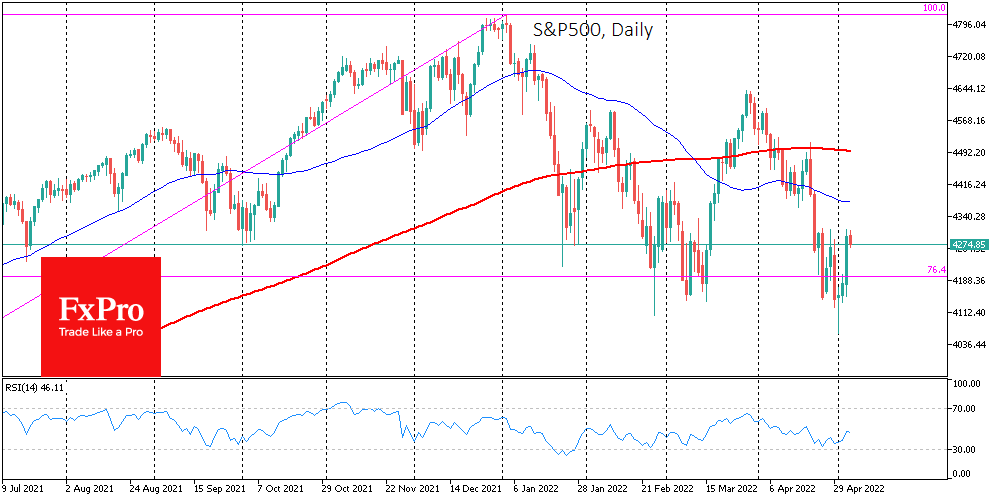Fed’s less hawkish tone triggers dollar correction, equities pullback
May 05, 2022 @ 12:41 +03:00
Last night the US Fed raised its rate by 50 bp and announced the looming start of asset sales from its balance sheet.
The market expected these things, but the details and forecasts were a little less hawkish, which played against the dollar and favoured the equity market. We should expect that the market’s adjustment to the Fed’s comments could stretch over several days or even begin a longer trend of market recovery.

The main points we saw:
- A later start. The Fed will start selling in June, whereas markets were expecting this move as early as May.
- A more cautious beginning. $47.5bn worth of paper will be sold in the first three months, while minutes from the previous meeting indicated that the FOMC discussed $95bn in sales per month. The Fed will not release the latest figure until three months later.
- A cap on rate hike step. Powell has rejected the idea of a 75-point rate hike at the next meeting.
Although the states last saw a rate hike of 50 points 22 years ago, the current moves should be perceived as softer than many observers estimate. From this point of view, the Fed maintains some continuity with the previous course and takes the first step more diminutive than the markets expect.
It may well be that an unexpected decline in GDP for the first quarter, according to a preliminary estimate, worked on the Fed’s easing rhetoric. It is also possible that the FOMC is looking with apprehension at the ballooning foreign trade deficit as evidence of a decline in the competitiveness of US goods.

It took April for equity and bond markets to put the latest hawkish scenario into prices, and it might take a week or two to adjust to the new position. But investors should be aware that the Fed is not jumping from one extreme to the other. Rather, it is methodically remaining more accommodative than the market expects it to be. This approach is moderately stimulative for the stock market.
The situation with the USD is more complicated as its FX movements are also based on monetary policy from other central banks. While sounding softer than market expectations, the FOMC is still more hawkish than its main competitors – the ECB, the Bank of Japan and the Bank of England. Despite commensurate inflation and a rather strong labour market, the latter is expected to raise rates by 25 points today.
Therefore, a new upward momentum could follow a brief pullback in the US currency until competitors gain the same or more speed than the Fed.
The FxPro Analyst Team







